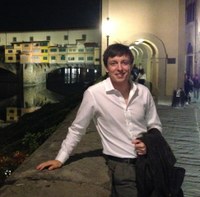Marco Giometto
(Columbia University)
Drag and Drag Partition in Vegetated Urban Canopies
| What | |
|---|---|
| When |
Feb 03, 2021 03:30 PM
Feb 03, 2021 04:30 PM
Feb 03, 2021 from 03:30 pm to 04:30 pm |
| Where | To be held via Zoom, see below for links |
| Contact Name | Ying Pan |
| Contact email | yyp5033@psu.edu |
| Add event to calendar |
|

This talk is presented as a Zoom Webinar and requires a passcode. For anyone outside the department; If you would like to attend, email ggk2@psu.edu
M. G. Giometto, Assistant Professor, Department of Civil Engineering and Engineering
Mechanics, Columbia University, New York, NY 10027, USA
Abstract: Trees are an integral part of the urban canopy, but their impact on surface fluxes are not typically accounted for in operational weather, dispersion and air quality models. In this presentation, I will propose a morphometric method for the determination of roughness lengths and zero-plane displacement heights of urban canopies, which includes drag and sheltering contributions from vegetation. The treatment is fully analytical and based on the assumption that roughness elements (buildings and trees) are randomly superposed on a given flat surface. Model predictions are compared against results from an extensive series of large-eddy simulations (LESs) of flow over idealized and realistic urban canopies with trees. Predictions are in good agreement with corresponding LES results, both in terms of total drag and drag partition. The model can be readily integrated in existing urban canopy formulations to evaluate aerodynamic parameters of cities. Strengths and limitations of the model will be discussed.
Bio: Dr. Giometto is an Assistant Professor in the Civil Engineering and Engineering Mechanics Department at Columbia University, and a Research Scientist at Amazon Prime Air. He received his BS and MS degrees in civil engineering from the University of Padua (2010), and a joint PhD in civil and environmental engineering from Braunschweig TU University and the University of Florence (2014). In 2016 he earned a second PhD in mechanical engineering from École Polytechnique Fédérale de Lausanne, where he won the EDME Award for the best thesis in mechanical engineering. Before joining Columbia University in 2018, he held postdoctoral positions at the University of British Columbia and at the Center for Turbulence Research, which is jointly operated by Stanford University and NASA Ames. His research focuses on advancing the current understanding and modeling capabilities of turbulent transport in the atmospheric boundary layer, with a lens on flow over and within urban and plant canopies.
Webinar link: https://psu.zoom.us/j/98431263164?pwd=RE1RbmRaNzYwK0VreXl0UHFwc0hIdz09
